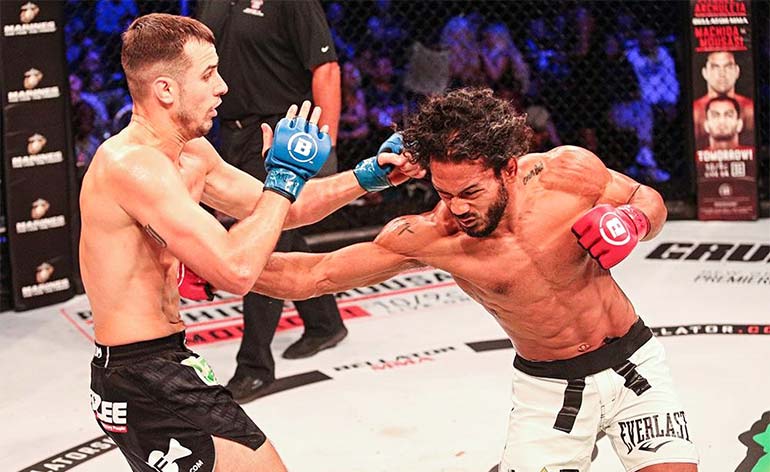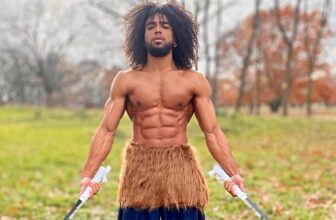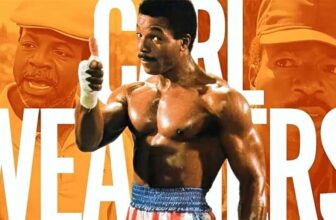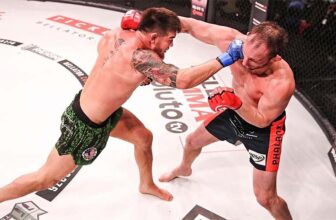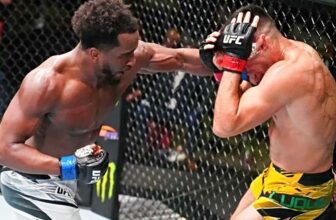
A friend once told me that training for six months in Muay Thai is equal to a black belt in Karate or Taekwondo. Such urban legends about Muay Thai still fly around today, such is its reputation as a deadly martial art.
It was developed over centuries in a country ravaged by war and evolved into a national sport becoming a key part of the country’s cultural identity.
The famous Lumpinee Boxing Stadium in Bangkok is essentially the Wembley Stadium of Muay Thai where thousands of people flock to watch as gloved up warriors step into the ring and battle for the much coveted Lumpinee Championship belt. Now without further ado, let’s get into September’s Martial Art of the Month and the powerful striking-kicking art of Muay Thai!
History
The history of Muay Thai or ‘Muay’, is thought to go all the way back to 13th Century Siam, during turbulent times of tribal skirmishes and wars with neighbouring kingdoms. The constant threat of attack led to the development of a military fighting system and creation of the first Siamese army in the year 1238. This brutal, yet effective fighting art aimed to utilize the entire body as a weapon focusing on points of contact on the body’s limbs mimicking weapons of war.
Your Under Armour: Conditioned Shins & Forearms
Striking hands acted as the dagger or sword, whilst the shins and forearms were conditioned like armour. Elbows were used to fell enemy fighters like a mace or hammer, and the knees and legs acted as the axe and staff. It was given the name “Art of Eight Limbs” a name by which Muay Thai is still known today.
With the prospect of war raging at any given moment, soldiers returning from the battlefield organized and competed in tournaments in various towns and villages. Residents were also encouraged to learn the fighting art to maintain a state of readiness for war. The tournaments had virtually no rules with competitors fighting inside a makeshift ring of rope placed on the ground in a circular shape. Fighters wrapped hemp rope around their hands coating it in a sticky starch to create a hardened striking surface.
The Evolution of Muay Thai
Over the next 400 years Muay evolved into a national sport that became ingrained into Siamese culture even enjoying full royal patronage and support. The 19th and 20th centuries saw the sport integrated into the country’s cultural identity thanks to monarchs such as King Rama V who built stadiums and training camps. Muay’s Thai’s global impact was felt as early as the first World War with serving European soldiers observing the Thai soldiers in competition, with some versed in western boxing and even Savate stepping into the ring.
Modern Influences on MMA & “Ong Bak” Thai Superstar, Tony Jaa
By 1920 the sport had spread globally and was named Muay Thai to distinguish it from western boxing. Training centers opened all over the world but the influence of western style boxing and training evolved to modernize the martial art into the form we know today. Many traditions around the sport remain, principally the donning of the Mongkhon (headband), Pra Jiad (armbands) and performing the Wai Khru and its modern influence can also be seen in MMA with fighters such as Anderson “The Spider” Silva. Its portrayal in films such as Kickboxer starring Jean-Claude Van Damme, catapulted the popularity of Muay Thai into the mainstream, featuring in numerous action pictures and launching the career of the indomitable “Ong Bak” Muay Thai Warrior himself, Tony Jaa.
Techniques & Training
Muay Thai training has a hardcore reputation fuelled by fiction yet rooted in truth.
Images of fighters tirelessly kicking trees till their legs bleed, smashing coconuts with their knees and hands, and putting their bodies through immense training stress are common and aren’t too far removed from their mythical raison d’être.
Chopping Down Banana Trees the Buakaw Way!
Check out this destructive display by seven-times world Muay Thai Champion Buakaw Banchamek below!
Traditional training methods were incredibly hardcore, born out of a time when those with no special equipment used natural resources for their training. The kicking of trees is not so far fetched as the Thai banana tree was used in lieu of the heavy bag – targeting its soft and porous parts ensured fighters could strike the surface hard without inflicting damage on their shins, whilst the rough bark hardened up their feet.
Conditioning the shins remains a vital part of Muay Thai training not only for kicking but to build the ‘body armour’ for blocking kicks.
Whilst some choose to ‘kick it’ old school today, Muay Thai incorporates modern calisthenics and cardiovascular training. The trusty banana tree has been replaced by the heavy bag, sand bags, focus mitts and of course ‘Thai Pads’ though the techniques of Muay Thai remain very distinct and instantly recognizable.
Punches
Muay Thai punches (Chok) were traditionally made up of left and right crosses and long circular strikes. The influence of western boxing saw the inclusion of jabs, (Mat Yaep) hooks (May Wiang San) and of course the high impact superman punch (Kradot Chok). Body punching is not so widely used as it exposes the head to strikes, and any body shots come from knees and kicks. Western influences replaced the traditional rope binding with boxing gloves though the impact from Muay Thai itself can still be felt.
Kicks
Contrary to popular assumption, Muay Thai has wider variety of kicks (Te) though they generally don’t include any side kicks or spinning application. The two most common are the foot jab, a variation on the front kick used mostly as a defensive and distancing tool to block or control any oncoming attack. It acts as a jab to deflect, but applied with enough power can knock an opponent off balance. Then there is the notoriously damaging round kick (Te Tat), drawing its power from the rotational hip movement putting the entire weight of the body behind the kick. The contra-rotation of the shoulder and arms add torque to the lower body for increased power and striking with the shins with devastating results.
Elbows
The elbows (Sok) are considered the most dangerous strikes in Muay Thai, coming in from all directions emulating a swinging mace (Sok Klap). Fighters use their elbows to pummel opponents into submission, and in some instances will cut an opponent’s eyes to blur their vision leaving them vulnerably blind thus open to attack.
Knees
Definitely the art’s most recognizable, signature bio-weapon, the knees (Ti Khao) are as destructive as the elbows, again coming in from all angles inflicting maximum damage to the body. The use of rotating hips and even jumping knees put a fighter’s power and force behind the strike, and with an opponent trapped in a clinch there is no defending the onslaught of knee strikes.
The Clinch
It’s worth mentioning the clinch (Chap Kho), a form of stand-up grappling executed correctly can subdue an opponent leaving them trapped and helpless. There is more to the clinch than meets the eye; the fighter not only grapples the neck but also traps his opponent’s arms to prevent movement and counter strikes. It can also be used to throw an opponent off balance to gain an advantage.
Famous Thai Fighters
Every martial art produces legendary figures, and modern day warriors who become veritable kick-ass ambassadors for their art, and Muay Thai is no exception with the heroes of the past coming from both poor and wealthy backgrounds. Siam’s royalty over the centuries embraced Muay Thai bestowing support and patronage – even Kings would practice this deadly fighting form and fight their way into infamy. King Prachao Sua aka the ‘Tiger King’ was thought to have disguised himself as a commoner to compete in tournaments around the country, defeating the best fighters of his era.
Nai Khanom Tom: Freedom Fighter & Father of Muay Thai
The most celebrated historical Muay Thai Warrior is none other than enslaved soldier, Nai Khanom Tom, the ‘Father of Muay Thai’. His story is so revered that Tom has effectively become Thailand’s very own Huo Yuanjia inspiring the same feeling of national pride.
Taken captive by the invading Burmese army, after the sacking of Ayudhya in 1776, Tom was forced to compete against Burmese fighters for entertainment. After beating ten fighters in quick succession he was granted his freedom instilling a renewed sense of national pride. His legendary win and inspiration is celebrated on March 17th every year.
Today, many of Thailand’s finest in-ring warriors (and a few from other countries) are battling their way through to the Muay Thai Hall of Fame.
Samart Payakaroon
An eight times world champion Samart is considered one of the greatest fighters of his generation. In his prime, he was known for his lightning reflexes, high fight IQ and superb ring vision making him unstoppable in the ring. Samart’s dedication and fighting success was so focused that even when he was pursuing his acting and music career he would step back into the ring on occasion and reign supreme, reminding fans why he was dubbed the ‘Muhammad Ali’ of Muay Thai.
Saenchai
Hailing from Maha Sarakham Province in Thailand’s northeastern (Isan) region, Saenchai brought ‘David and Goliath’ fights to Muay Thai pitting himself against mostly larger opponents. Having fought 88 bouts in 15 countries Saenchai won world championship titles in four different weight divisions. Saenchai is also known for his showmanship in the ring, his flamboyant persona creeps into his fighting style compelling such show stopping-techniques as the cartwheel kick.
Buakaw Banchamek
Whilst Thai boxers are known for their hardcore training and devastating ability in the ring few are currently as hardcore Buakaw Banchamek. His fighting career started early, at the age of eight literally breathing, eating, and bleeding Muay Thai. Buakaw’s fight record stands at an impressive 239 wins fighting in four different weight classes from featherweight to middleweight winning championship matches in each one. He has won over 12 world championships in not only Muay Thai but also belts in K-1 kickboxing making him an all round formidable fighter. Buakaw’s incredible career was the subject of “Buakaw – Boxer, Legend, Legacy” written and directed by German filmmakers Gerrit Staron and Timo Ruge.
Parinya Charoenphol (“Nong Toom”)
Any list of Thailand’s greatest fighters should feature Parinya aka Nong Toom, Muay Thai’s pro-transgender fighter. In a very macho world the young Parinya – who was only a Kathoey (ladyboy) at the time – fought her opponents hard in the ring and at the same time battled the hearts of fellow fighters and fans. She soon won over both fighting her way up the leagues until she turned 18 and could finally afford her sex reassignment surgery.
Nong Toom went on to fight in exhibition fights, opened her own gym and continues to promote transgender fighters in the sport. Her real life underdog story made its way into cinema with the wonderfully inspiring movie “Beautiful Boxer” featuring an award-winning performance from boxer-turned actor, Asanee Suwan.
Ramon “The Diamond” Deckers
Few non-Thai fighters dominated the ring in the home of Muay Thai quite like the late Ramon Dekkers from the Netherlands. Dubbed “The Diamond”, Deckers was one of the few Muay Farang (foreign fighters) to be heralded a legend in Thailand.
In the ring he was fearless and aggressive with one title win after another taking him to Thailand where he would trade blows with the country’s finest and win the coveted International Muay Thai Federation (IMTF) title.
A Real-Life “Nuk Soo Kow” (White Warrior)
Like a real life ‘nuk soo kow’ (white warrior), Dekkers won the hearts and minds of Thai fight fans, even when he feuded with one of their icons Coban Lookchaomaesaitong, aka ”The Cruncher.”
Dekker’s Worldwide Influence
Dekkers was influential all over the world providing the biggest inspiration for more western fighters to step into the Thai ring. For his services to the sport he received a royal award from the Thai Royal Family and was also appointed ambassador of all Muay Farang in Thailand.
Ramon Dekkers’ untimely death at the young age of 43 dealt a powerful blow to the sport but catapulted him into legendary status. Today, he remains a much revered fighter especially in Thailand.
















